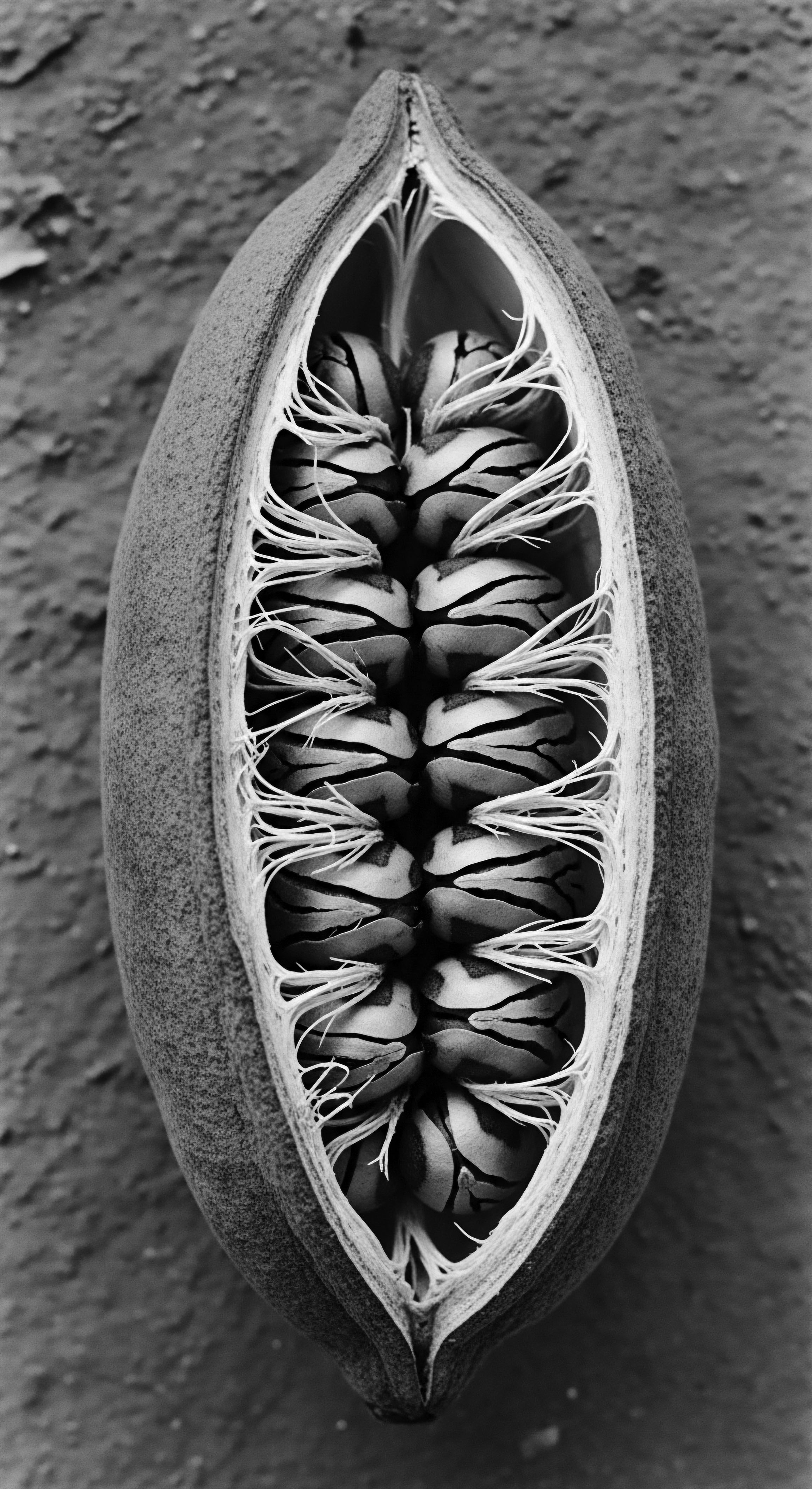
Fundamentals
Botanical Hair Remedies, at their core, represent a timeless pact between humanity and the earth’s verdant offerings, a profound understanding of nature’s capacity to nourish and restore. For Roothea, this definition extends beyond mere plant extracts for hair; it speaks to a living lineage of care, particularly for Textured Hair Heritage, where ancestral wisdom forms the bedrock of practice. It is an explanation of how indigenous plants, herbs, oils, and clays have been thoughtfully employed across generations to maintain, adorn, and honor the intricate beauty of curls, coils, and waves. This foundational comprehension is not a modern invention but an echo from the source, resonating with the earliest human engagements with the natural world.
From the communal hearths and gathering spaces of ancient African civilizations, the recognition of specific plants for their hair-benefiting properties was a deeply ingrained aspect of daily life and ritual. These practices were not isolated acts but integral components of cultural identity and communal well-being. The knowledge of which leaves, roots, or seeds possessed the power to cleanse, moisturize, or strengthen hair was transmitted orally, through observation, and by shared experience, becoming a precious inheritance.
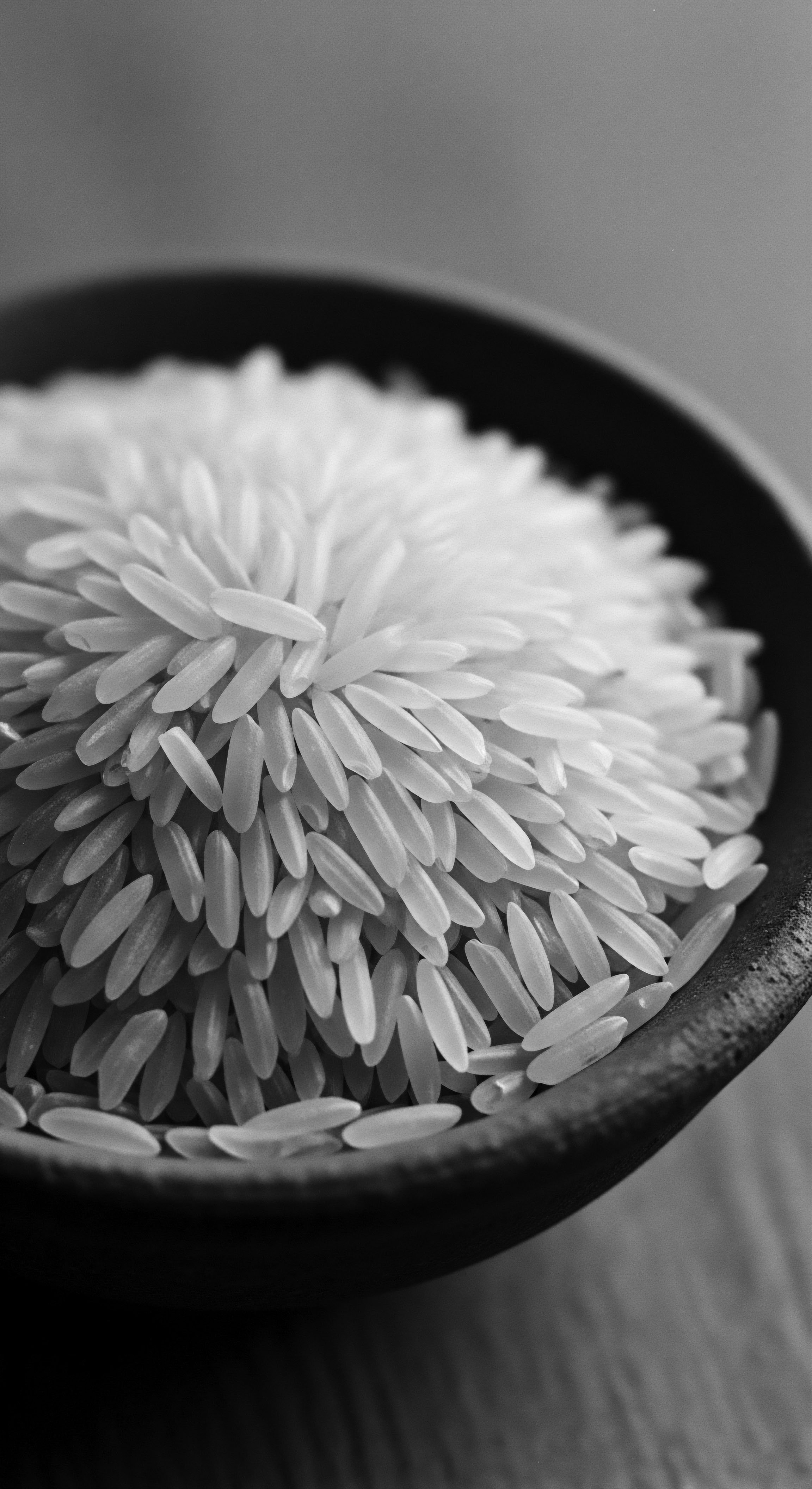
Early Ancestral Practices and Plant Knowledge
The earliest forms of botanical hair remedies for textured hair arose from a keen observation of the natural environment. Ancient communities understood that the unique structure of coiled and curly hair required specific approaches to maintain its health and vibrancy. They discovered that certain plant materials could offer the necessary moisture, protection, and structural support.
For instance, in West African traditions, oils and butters were consistently used to keep hair moisturized in hot, dry climates, often paired with protective styles to maintain length and health. These early remedies were often simple, yet remarkably effective, laying the groundwork for complex systems of care.
Botanical Hair Remedies are a living testament to ancestral wisdom, offering profound insights into nature’s restorative power for textured hair.
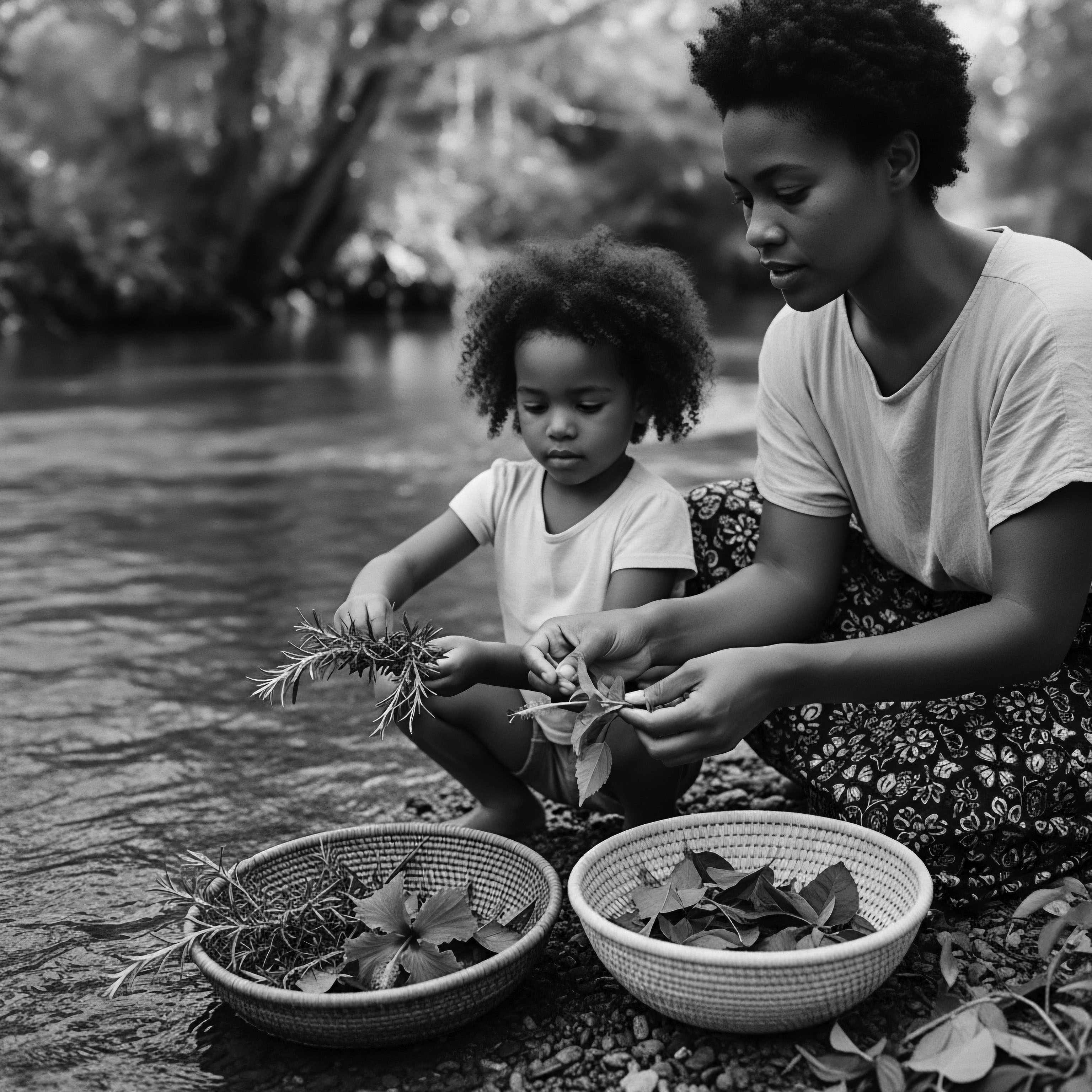
The Elemental Connection ❉ Earth’s Generosity
The relationship between early communities and the botanical world was one of deep reverence and practical application. They perceived plants not merely as resources but as partners in holistic well-being. The leaves, barks, seeds, and roots became instruments of care, each offering unique attributes.
- Shea Butter (Vitellaria paradoxa) ❉ Sourced from the shea tree native to West Africa, this rich butter has been a staple for centuries, providing intense moisture and a protective barrier for both skin and hair. Its emollient properties are particularly beneficial for textured hair, which often experiences natural dryness.
- Aloe Vera (Aloe barbadensis miller) ❉ Revered in ancient Egyptian and Ayurvedic traditions, aloe vera was utilized for its cooling, soothing, and hydrating qualities, contributing to scalp health and hair resilience. Its polysaccharides aid in moisture support, making hair feel smooth and light.
- Palm Oil (Elaeis guineensis) ❉ Indigenous to West and Central Africa, palm oil was employed for its conditioning properties, helping to nourish and protect hair strands. Its historical application speaks to a comprehensive approach to hair vitality.
These plants were not simply applied; their preparation often involved specific rituals, passed down through generations, ensuring the potency and efficacy of the remedies. The careful extraction of oils, the grinding of herbs, or the mixing of clays were acts of dedication, connecting the individual to a collective heritage of care. This fundamental understanding of botanical gifts as vital components of hair health remains a cornerstone of Roothea’s ethos, recognizing the enduring wisdom of those who first walked the earth.
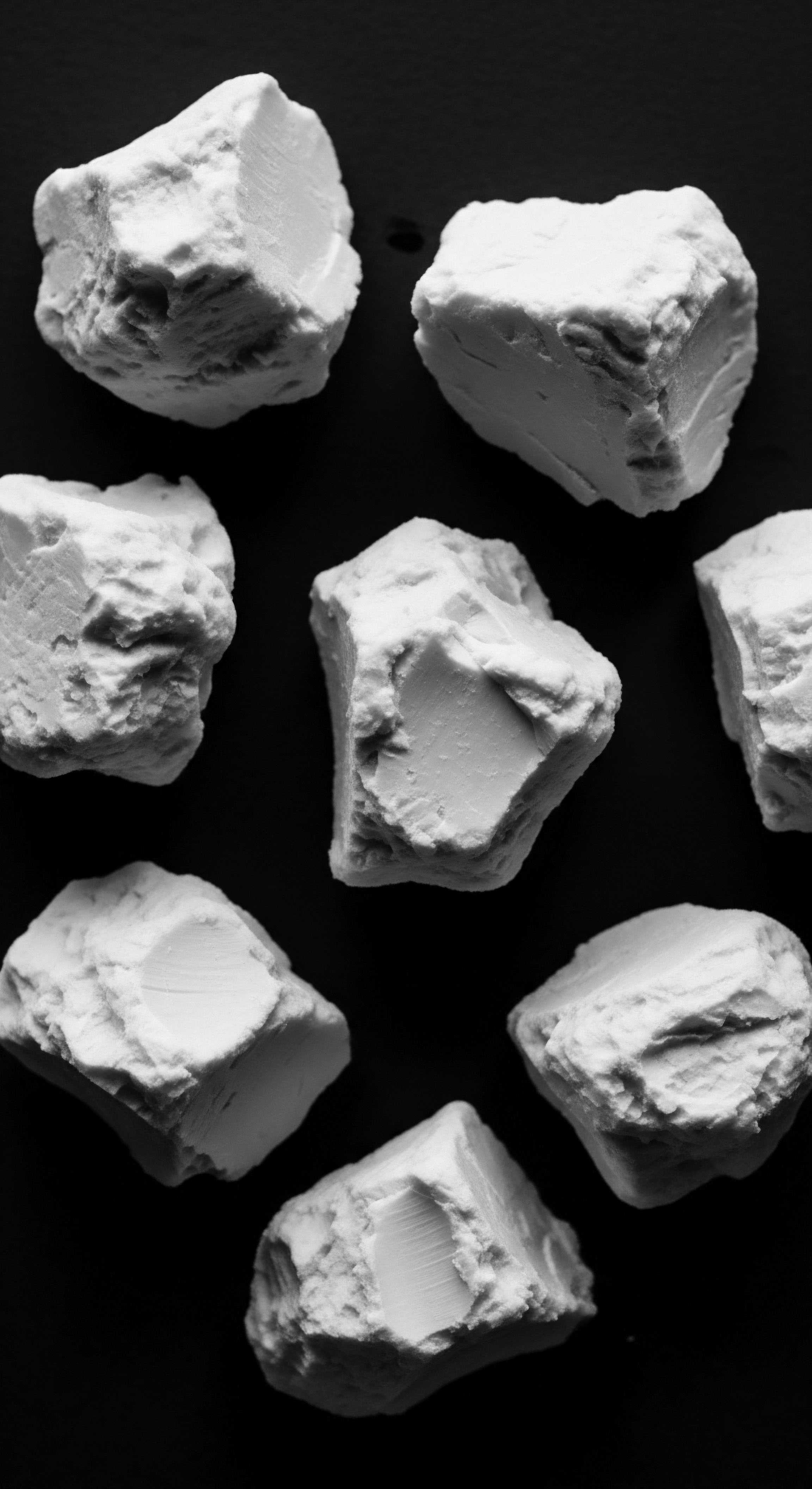
Intermediate
Building upon the foundational comprehension of Botanical Hair Remedies, an intermediate exploration reveals how these practices, steeped in Textured Hair Heritage, have transcended time and geography. The meaning of Botanical Hair Remedies here expands to encompass the dynamic process of transmission and adaptation, where ancestral knowledge, carried across oceans and generations, found new expressions and applications. This layer of understanding delves into the practical applications within traditional and evolving hair care rituals for textured hair across the diaspora, emphasizing the continuity and ingenious adaptation of inherited wisdom.
The journey of these botanical traditions is not a static historical record but a living, breathing narrative of resilience. As African peoples were forcibly displaced during the transatlantic slave trade, they carried with them not only their memories but also their profound knowledge of plants and their uses for hair and overall well-being. This transfer of ethnobotanical wisdom, often covert and under immense duress, ensured the survival of practices vital to identity and self-preservation. In new lands, ancestral botanical understanding merged with indigenous and European plant knowledge, giving rise to unique diasporic hair care traditions.
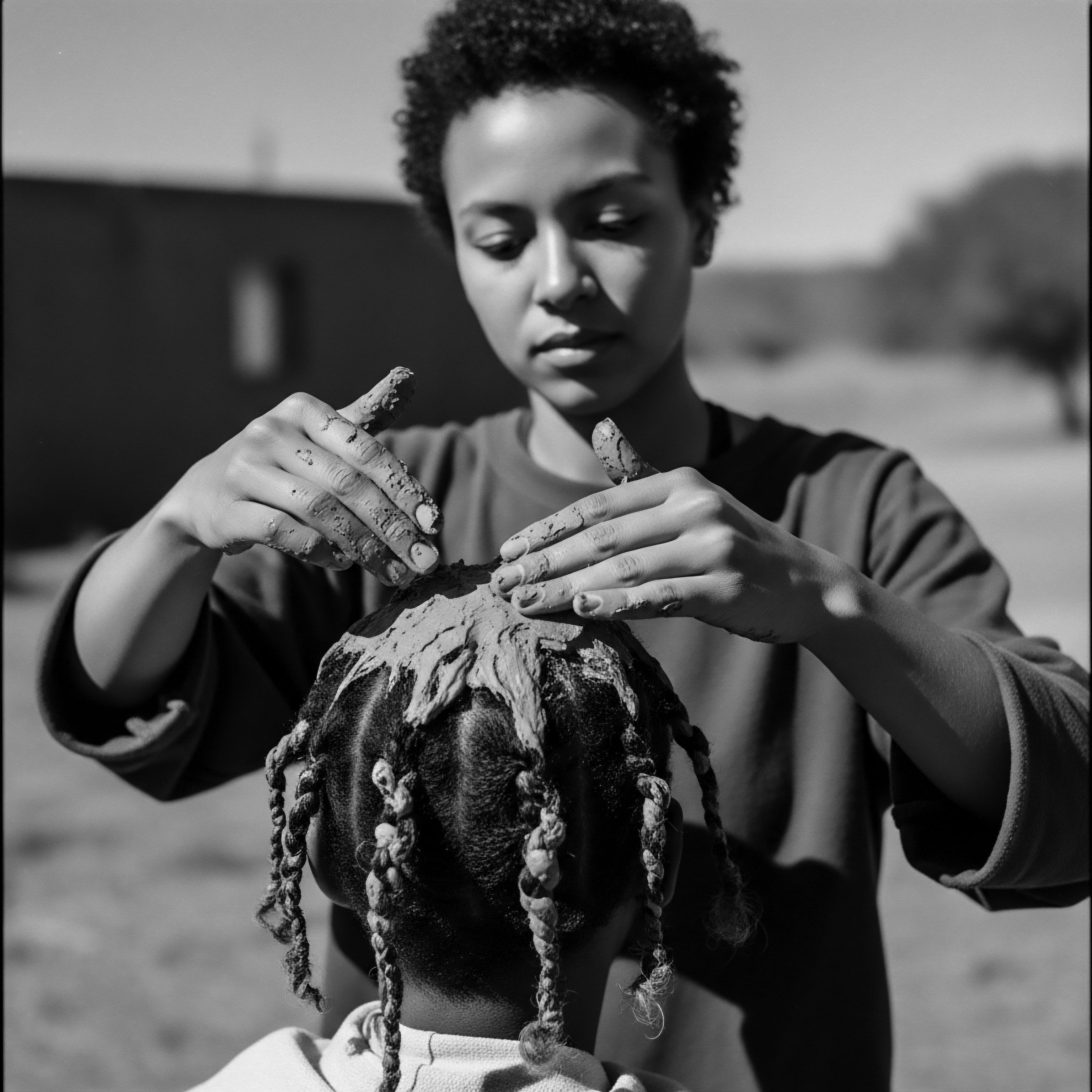
The Tender Thread ❉ Continuity Across the Diaspora
The passage of botanical hair remedies through the African diaspora illustrates a remarkable human capacity for adaptation and cultural preservation. Deprived of familiar tools and environments, enslaved Africans ingeniously repurposed available materials and cultivated new plants to continue their hair care rituals. This period saw the emergence of innovative applications for plants like the castor bean (Ricinus communis), which traveled from Africa to the Caribbean during the slave trade and became deeply integrated into Jamaican cultural heritage.
The journey of botanical hair remedies across the diaspora speaks to an enduring legacy of resilience and ingenuity, adapting ancestral knowledge to new landscapes.
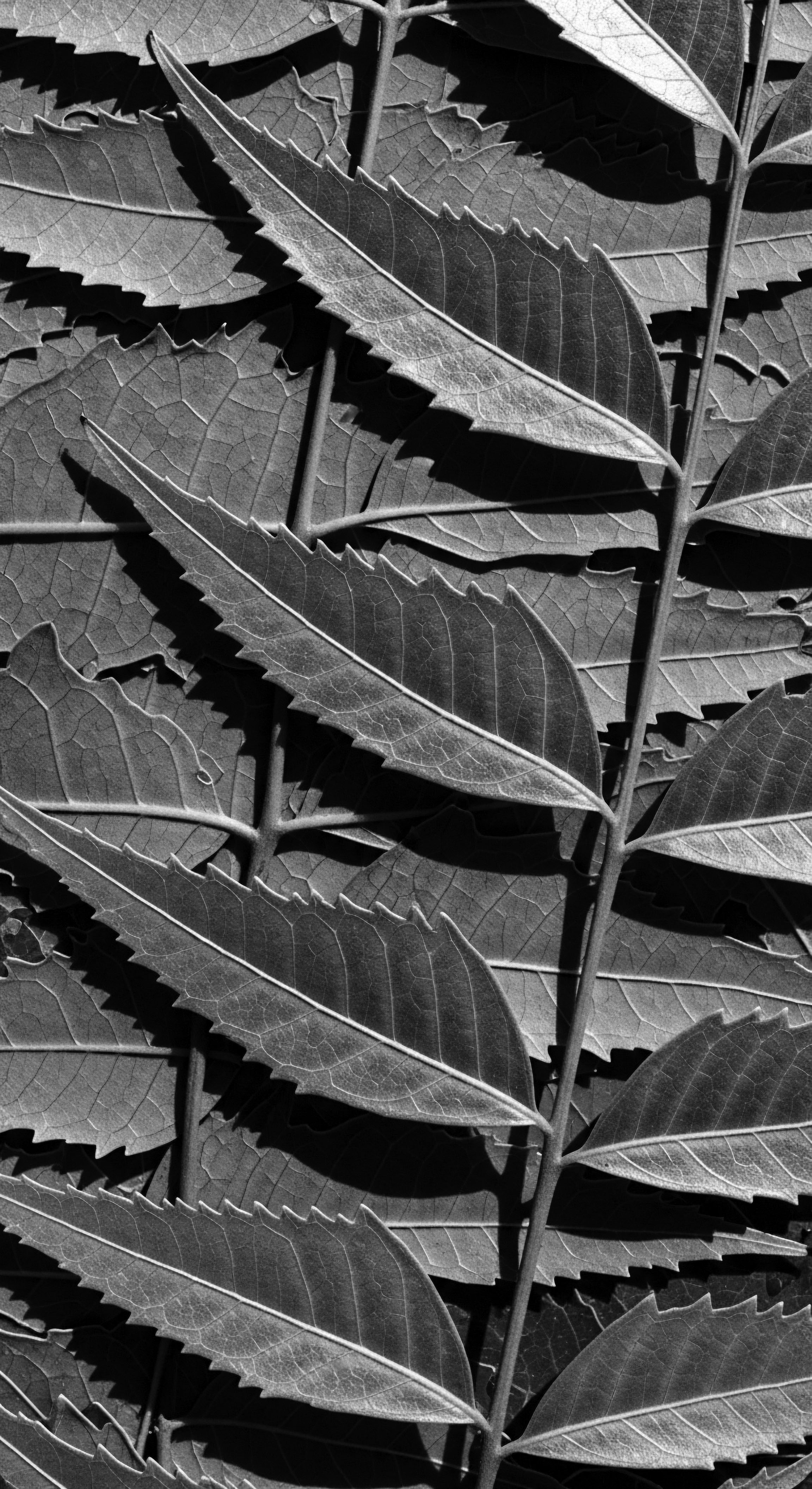
Adaptations and Innovations in Care
The communal act of hair care, often involving the application of botanical remedies, became a cherished social ritual, a space for bonding, storytelling, and the quiet transfer of cultural knowledge. This collective approach to hair health strengthened communal ties and offered solace amidst hardship.
The versatility of certain botanicals allowed for their continued relevance across varied climates and conditions. For instance, the oil from the Castor Bean, already used in Africa for medicinal and lamp oil purposes, found renewed significance in the Caribbean for hair care, skin conditions, and as a general health tonic. The unique processing of roasting the beans before extraction gave rise to Jamaican Black Castor Oil (JBCO), distinguishing it from its pale yellow counterpart and making it a premium product recognized for its efficacy in moisturizing, strengthening, and promoting hair vitality.
| Botanical Ingredient Castor Oil (Ricinus communis) |
| Ancestral African Use (Pre-Diaspora) Medicinal properties, lamp oil, general ethnobotanical heritage. |
| Diasporic Adaptation (Post-17th Century) Central to hair care for growth, moisture, and scalp health; processed into Jamaican Black Castor Oil. |
| Botanical Ingredient Shea Butter (Vitellaria paradoxa) |
| Ancestral African Use (Pre-Diaspora) Deep moisturizer for skin and hair, protective barrier against climate. |
| Diasporic Adaptation (Post-17th Century) Continued as a foundational emollient for moisture retention in textured hair across various diasporic communities. |
| Botanical Ingredient Coconut Oil (Cocos nucifera) |
| Ancestral African Use (Pre-Diaspora) Used in regions where it was abundant for nourishment and protection. |
| Diasporic Adaptation (Post-17th Century) Adapted for use in Caribbean and South American communities for moisture sealing and shine, often blended with other ingredients. |
| Botanical Ingredient These botanical shifts illustrate a living heritage, where plant wisdom endured and transformed to meet the unique needs of textured hair across new landscapes. |
The careful preparation of these remedies, often involving traditional methods passed down through families, reflects a deep understanding of their properties and a commitment to preserving cultural practices. The very act of preparing and applying these remedies became a quiet act of resistance, a way to hold onto identity and cultural sovereignty in the face of oppression. This intermediate understanding underscores that Botanical Hair Remedies are not merely products but the tangible expressions of an unbroken lineage of care, a testament to the enduring spirit of textured hair heritage.
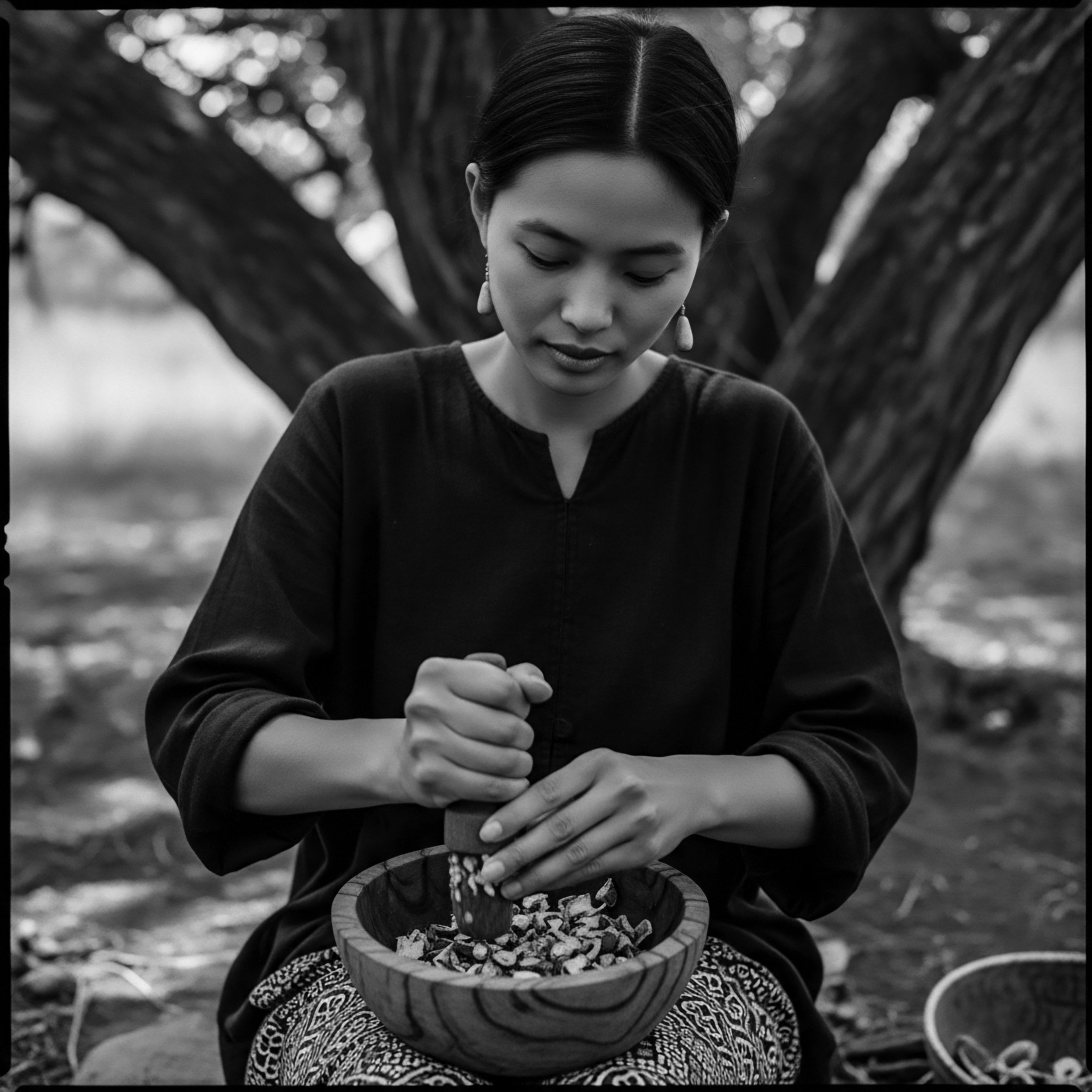
Academic
The advanced understanding of Botanical Hair Remedies, particularly within the context of Textured Hair Heritage, transcends simple application, moving into a sophisticated analysis grounded in ethnobotanical inquiry, historical sociology, and contemporary hair science. This definition considers Botanical Hair Remedies as a complex nexus where biological efficacy, cultural meaning, and historical resilience converge. For the expert, it signifies a profound recognition of ancestral ingenuity, its ongoing evolution, and its scientific validation, offering a compound, deeply insightful explication of its full significance. It is a scholarly lens through which we appreciate the interplay of biological, historical, psychological, and social factors shaping the care and expression of Black and mixed-race hair.
The scientific study of traditional botanical hair remedies often reveals a sophisticated, albeit empirically derived, understanding of plant biochemistry. For instance, the presence of specific compounds within plants, long utilized for their perceived benefits, frequently aligns with modern scientific findings on hair physiology and scalp health. This validation bridges ancient wisdom with contemporary understanding, demonstrating that the effectiveness of these remedies is not merely anecdotal but often rooted in observable biological mechanisms.
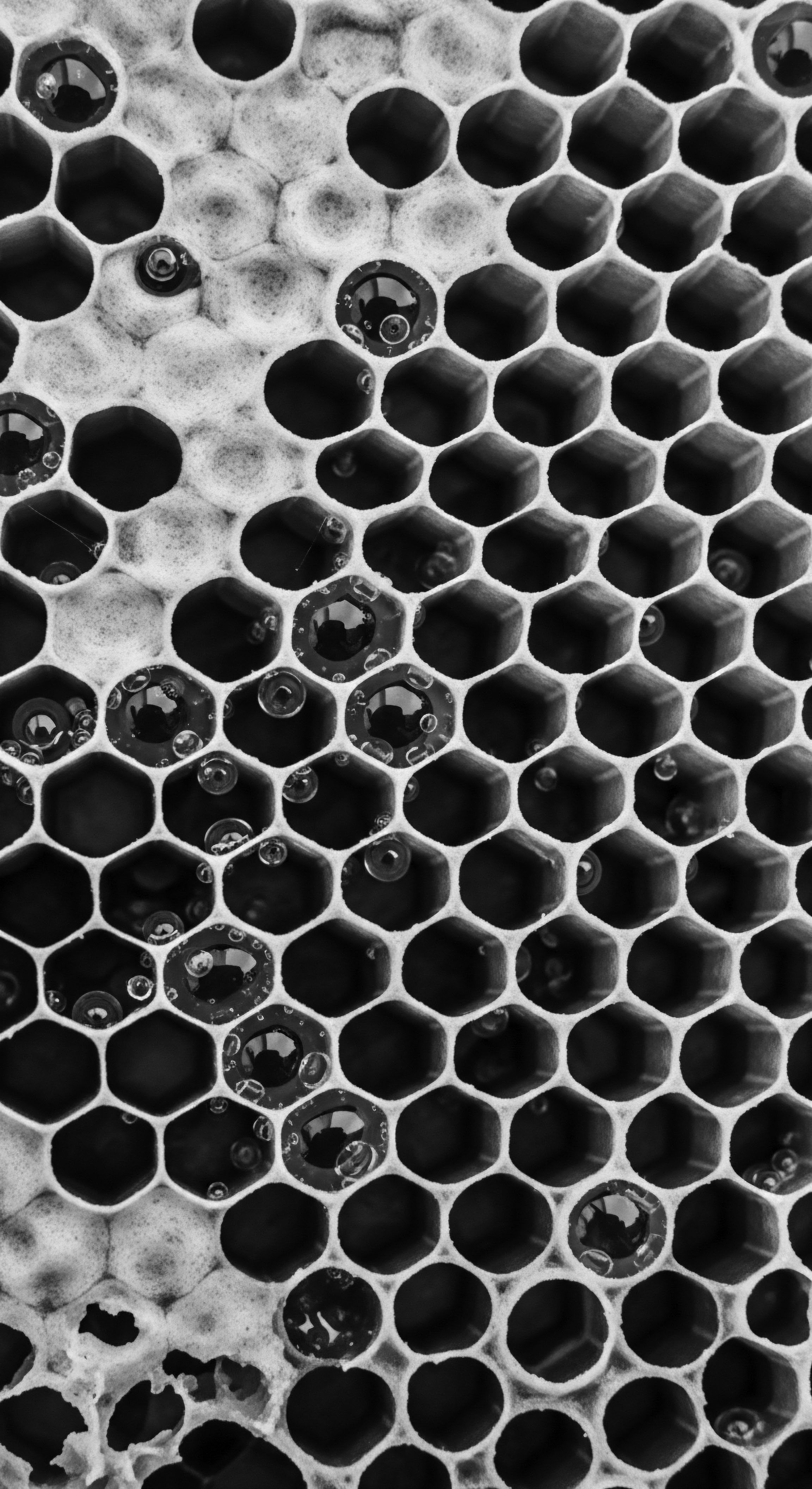
Ethnobotanical Underpinnings and Scientific Validation
The systematic investigation into the ethnobotanical practices of African and diasporic communities reveals a rich pharmacopoeia of plants specifically chosen for their hair-benefiting properties. A study reviewing African plants used for hair care identified 68 species, with uses targeting alopecia, dandruff, lice, and tinea. This survey highlights the breadth of traditional knowledge, demonstrating a targeted approach to various hair and scalp conditions. The efficacy of many of these traditional therapies, while often explained through ancestral narratives, finds compelling correlation with modern phytochemical analysis.
Consider the profound historical example of Jamaican Black Castor Oil (JBCO). Its journey from Africa to the Caribbean, deeply embedded in the transatlantic slave trade, represents a powerful instance of botanical heritage and adaptation. Enslaved Africans, facing dire conditions and a lack of formal medical care, cultivated and adapted plants they knew from their homelands, blending this knowledge with that of indigenous peoples.
The castor bean plant (Ricinus communis), already valued in Africa for its medicinal properties, became a cornerstone of hair and skin care in Jamaica. The unique processing of JBCO—roasting the beans before pressing—is a testament to the resourcefulness and scientific acumen of these ancestral practitioners, a method that likely enhances the oil’s alkalinity and ash content, believed to contribute to its purported efficacy.
The deep history of Botanical Hair Remedies reveals an intricate interplay between ancestral knowledge, cultural resilience, and verifiable scientific efficacy.
This traditional preparation, rooted in survival and self-care, speaks volumes about the enduring spirit of those who sustained their practices. The practice of using JBCO for hair growth, moisture, and scalp health has been passed down through generations, becoming a symbol of Jamaican cultural heritage. A survey of individuals with afro-textured hair identified Ricinus communis (castor oil) as the most cited plant for promoting hair growth, with the ricinoleic acid it contains stimulating microcirculation in the scalp. This specific biochemical action, understood empirically for centuries, now finds a scientific explanation, underscoring the deep, intuitive understanding of these ancestral practitioners.
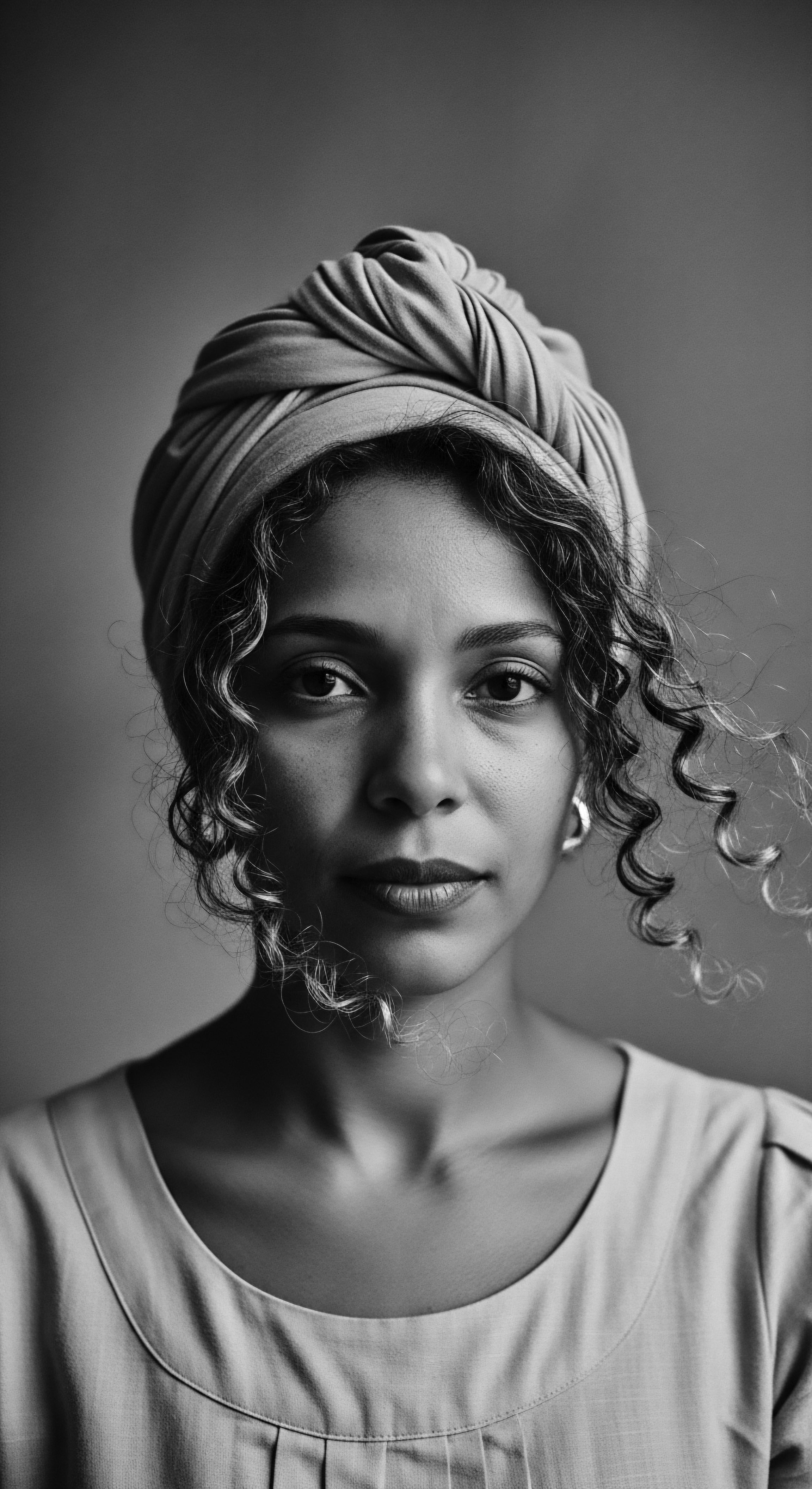
Socio-Cultural and Psychological Dimensions
Beyond their biological actions, Botanical Hair Remedies hold immense socio-cultural and psychological weight within textured hair communities. The acts of preparing and applying these remedies often represent more than just grooming; they are rituals of connection, identity, and resistance. During periods of enslavement and subsequent systemic oppression, hair care became a clandestine act of cultural preservation.
The deliberate shaving of heads by enslavers aimed to dehumanize and strip individuals of their African identity. In response, the continued practice of traditional hair care, often using available botanicals, became a quiet yet potent assertion of self and heritage.
The collective act of hair care, where mothers, aunts, and friends would gather to braid and oil hair, served as a vital space for community bonding and the transmission of oral histories and traditional knowledge. This communal aspect imbued the botanical remedies with a deeper significance, linking them to narratives of survival, beauty, and cultural continuity.
The enduring popularity of specific botanical ingredients within the textured hair community today also reflects a conscious choice to reclaim and celebrate ancestral practices. The “Natural Hair Movement,” for instance, has seen a resurgence of interest in plant-based ingredients, not merely for their cosmetic benefits but as a statement of identity and a rejection of Eurocentric beauty standards that historically promoted hair straightening. This movement highlights how botanical hair remedies are intertwined with a broader struggle for self-acceptance and cultural pride.
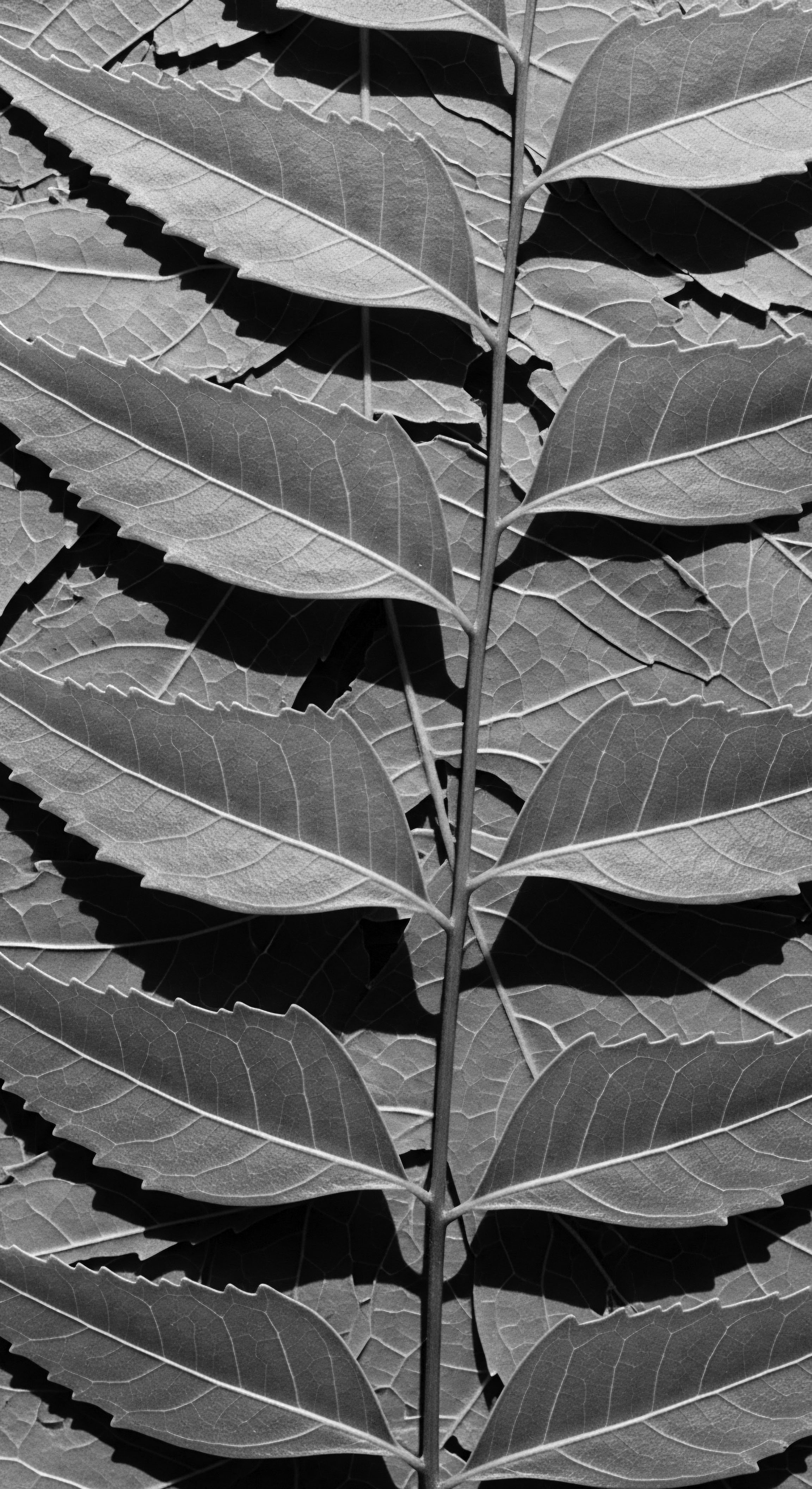
The Unbound Helix ❉ Informing Future Innovations
From an advanced perspective, understanding the historical and ethnobotanical context of Botanical Hair Remedies provides a critical framework for future innovation in textured hair care. Rather than simply seeking novel compounds, this approach advocates for a respectful inquiry into traditional knowledge systems, recognizing them as rich sources of inspiration and validated efficacy. This means:
- Reverent Research ❉ Prioritizing studies that investigate the mechanisms of action of traditionally used botanicals, such as those found in African ethnobotanical surveys. This validates ancestral wisdom while opening avenues for sustainable sourcing and ethical product development.
- Cultural Contextualization ❉ Ensuring that modern formulations and marketing strategies for botanical hair remedies acknowledge and honor their historical and cultural origins, particularly for textured hair communities. This combats cultural appropriation and promotes authentic representation.
- Holistic Wellness Models ❉ Recognizing that ancestral hair care practices were often integrated into broader systems of holistic wellness, addressing not just the hair strand but also scalp health, diet, and spiritual well-being. Future innovations can draw from this comprehensive perspective.
The definition of Botanical Hair Remedies, at this academic level, is therefore a call to action ❉ to meticulously document, scientifically validate, and respectfully perpetuate the rich heritage of plant-based hair care, ensuring that the ‘Soul of a Strand’ continues to voice identity and shape futures for generations to come. It underscores that these remedies are not relics of the past but living elements of a dynamic, evolving heritage.
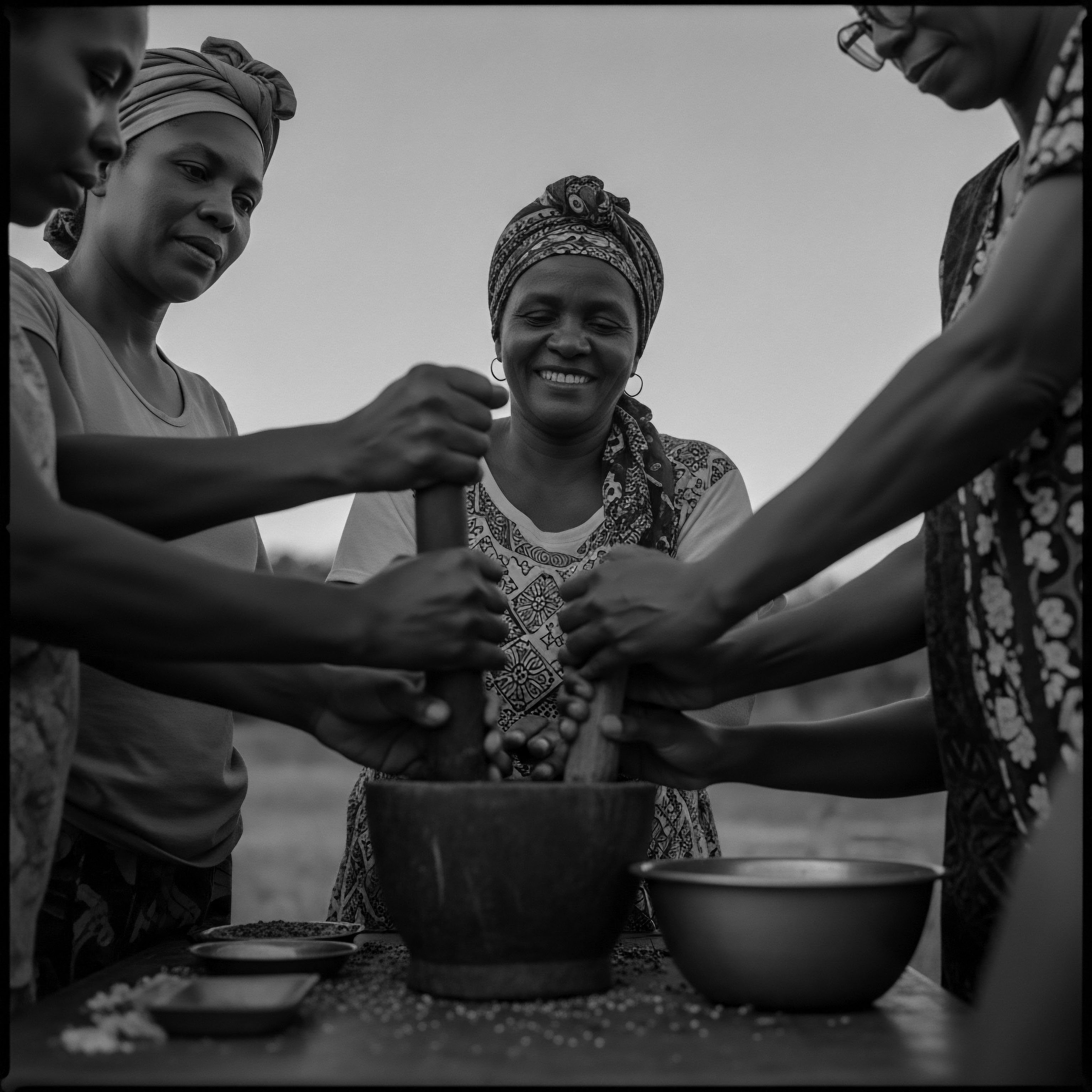
Reflection on the Heritage of Botanical Hair Remedies
The journey through the meaning of Botanical Hair Remedies, from their elemental beginnings to their complex academic interpretations, consistently reveals a profound truth ❉ they are more than mere compounds applied to strands. They are living archives of Textured Hair Heritage, imbued with the spirit of ancestral resilience and the enduring wisdom of the earth. This exploration unveils a continuous dialogue between past and present, where the whispers of ancient forests and communal gatherings still guide our hands in acts of care. The ‘Soul of a Strand’ ethos finds its truest expression in this legacy, recognizing that each coil, each curl, carries the stories of those who came before, a testament to enduring beauty and fortitude.
The significance of these botanical gifts extends beyond the physical realm, touching upon identity, community, and sovereignty. They represent a deep-seated knowledge system, cultivated over millennia, which understood the unique needs of textured hair long before modern science articulated its structure. This ancestral insight, passed down through the tender thread of generations, allowed communities to not only maintain their crowning glory but also to express their cultural pride and resist forces that sought to diminish their selfhood.
In every carefully chosen leaf, every patiently extracted oil, there lies a connection to a profound history of self-care and communal bonding. This heritage teaches us that true wellness for textured hair arises from a harmonious relationship with nature, respecting its rhythms and honoring the knowledge that has sustained us. The botanical remedies stand as a vibrant symbol of continuity, a reminder that our hair is a powerful canvas for expressing who we are, where we come from, and the unbound future we envision.
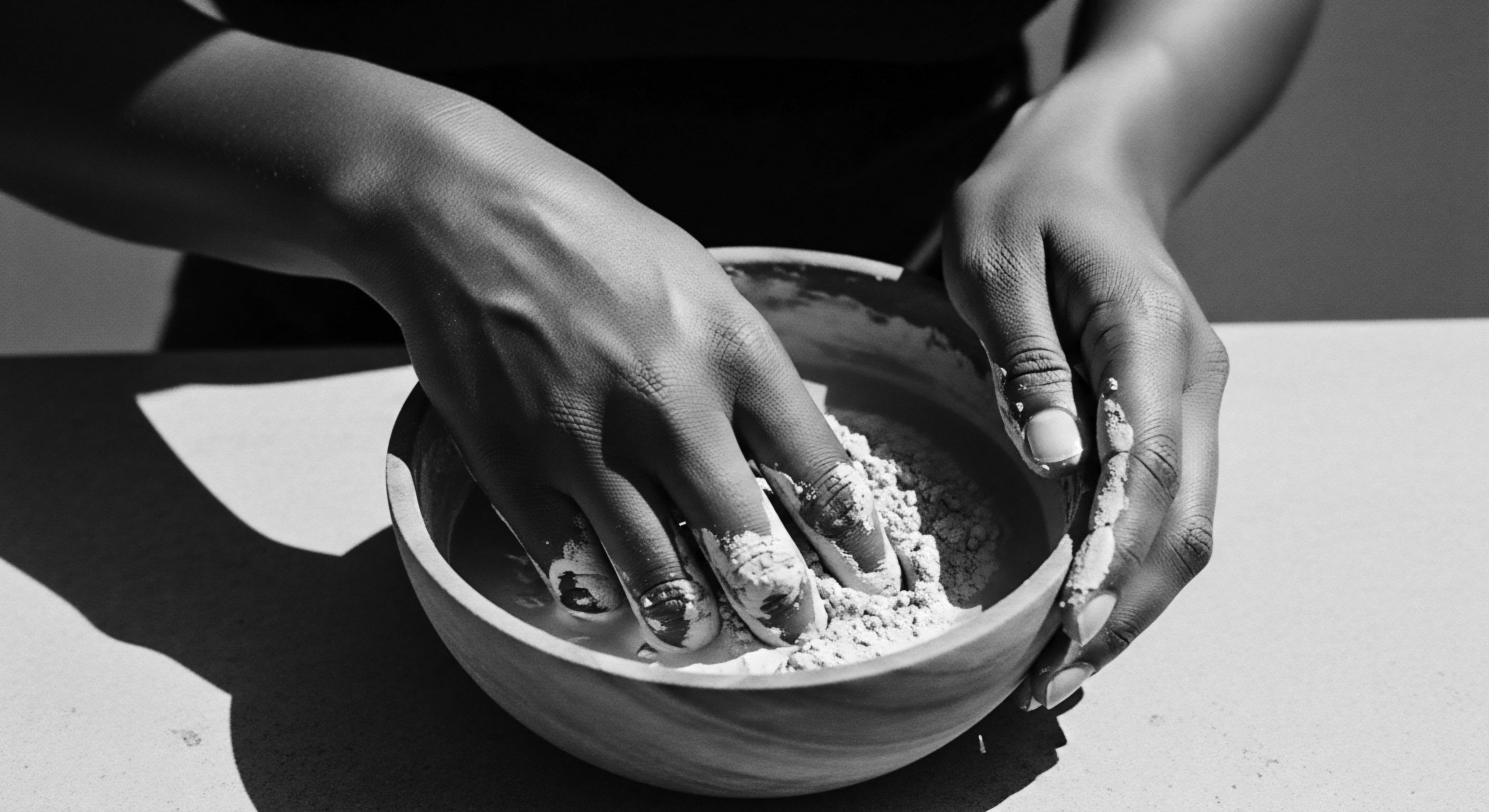
References
- Carney, J. A. (2001). Black Rice ❉ The African Origins of Rice Cultivation in the Americas. Harvard University Press.
- Carney, J. A. (2012). African Ethnobotany in the Americas. Springer.
- Carney, J. A. & Marin, R. (2004). The African Seedbeds of American Rice. In T. J. Bassett & D. E. Crummey (Eds.), African Savannas ❉ Global Narratives and Local Encounters. James Currey.
- Chikwanda, A. (2021). Ancient African Hair Growth Secrets For Healthy Hair. Sellox Blog.
- Fongnzossie, F. E. M. et al. (2017). Cosmetic Ethnobotany Used by the Gbaya Ethnic Group in the Eastern Region of Cameroon. Journal of Medicinal Plants Studies.
- Gorbatenko-Roth, K. et al. (2023). What Every Dermatologist Must Know About the History of Black Hair. Journal of Drugs in Dermatology.
- Hattuma, L. (2022). An Ethnobotanical Portrait of a Creole Woman. Literature in the Postcolony.
- Mwinga, M. L. et al. (2019). Ethnobotany of Traditional Cosmetics Among the Vhavenda Women in Limpopo, South Africa. Journal of Ethnopharmacology.
- Okafor, E. O. & Akerele, J. O. (2024). Cosmetopoeia of African Plants in Hair Treatment and Care ❉ Topical Nutrition and the Antidiabetic Connection? MDPI.
- Prabhu, R. M. et al. (2021). Ethnobotanical Survey of Medicinal Plants Used by Pachamalai Tribe in Tamil Nadu, India for Hair Care. Journal of Pharmacognosy and Phytochemistry.
- PROTA. (2024). Ricinus communis. Plant Resources of Tropical Africa.
- PushBlack. (2023). Why Jamaican Black Castor Oil Is Rich in Black History. PushBlack.
- Sharaibi, O. J. et al. (2024). Cosmetic Ethnobotany Used by Tribal Women in Epe Communities of Lagos State, Nigeria. Journal of Complementary Medicine & Alternative Healthcare.
- Sunny Isle Jamaican Black Castor Oil. (n.d.). About Us.
- The House of Shayaa. (2023). How Diet and Nutrition Supernaturally Impact Afro Hair Health with The House of Shayaa.
- Twyg. (2022). 9 Local Black-Owned Haircare Brands for Natural Hair. Twyg.
- Vitaelique. (2024). What Sets JBCO Apart as a Symbol of Jamaican Heritage. Vitaelique.
